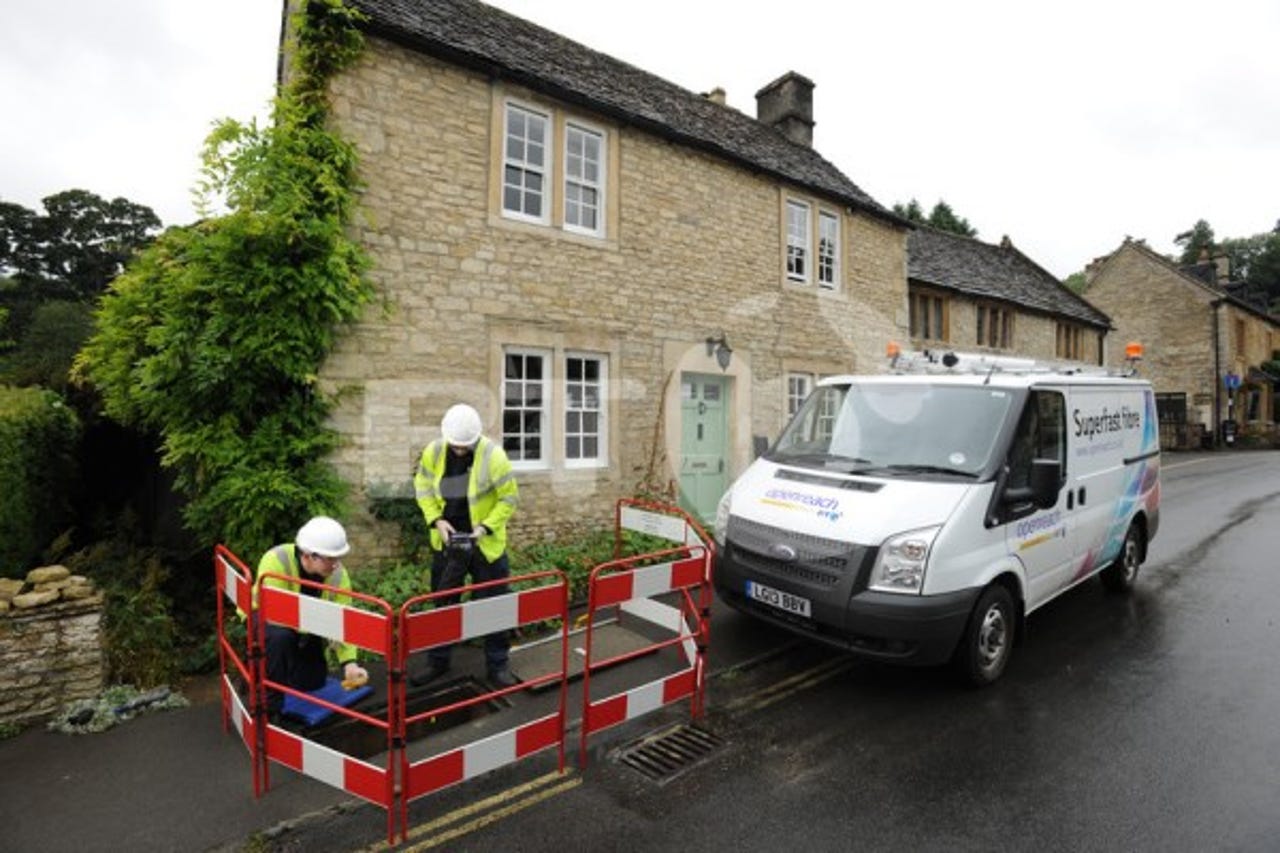UK government's Superfast Broadband project reaches a million homes


The British government claims that its £1.7bn ($2.9bn) superfast broadband project has expanded the high-speed broadband network to a million homes that would not have been reached by the normal commercial rollouts from suppliers such as BT and Virgin Media. The project, run by BDUK (Broadband Delivery UK), is spending £780m ($1.3bn) to make sure that 95 percent of the UK can get superfast broadband by 2017.
The government claims its rural programme "will deliver returns of £20 for every £1 invested, representing tremendous value for money". It will also "create an additional 56,000 jobs in the UK by 2024" and boost rural economies by £275m per month.
Another £300m of government money is also being spent: £150m to provide superfast broadband (24Mbps or more) to businesses in 22 cities, and £150m to improve mobile phone and data network services.
The main aim of the project is to extend high-speed broadband to rural areas and reduce the gap between urban and rural broadband speeds.
Gavin Patterson, BT's CEO, said in a statement: "Getting fibre to rural areas is hard, and often complex, work but we are making great progress. Our engineers are busy, from Hampshire to the Highlands, connecting homes and businesses whatever the challenge.
"We are laying undersea cables to the Outer Hebrides, reaching remote villages in Wales and transforming rural areas across England."
Although the installation contracts were devolved to regional organisations for competitive tenders, BT secured all of them, after Japan's Fujitsu withdrew. As a result, BT has contributed the largest amount to funding Superfast Broadband. The rest has come from BDUK, regional councils, and the European Union.
Wales has made the largest number of connections so far, with 190,393, followed by North Yorkshire with 133,000. The worst result is from the Isle of Wight, which claims zero connections.
The IoW's council was the last of the 45 areas to sign a contract, and says its "intervention area" includes "20,179 premises or roughly 30 percent of the area not already covered by BT Openreach's commercial roll-out, which is already underway on the Island".
The UK's environment secretary, Elizabeth Truss, said: "Today’s milestone shows just how far we’ve come in bringing faster, more reliable broadband to communities across the country. This investment will make a real difference to the rural economy, changing the way that businesses and consumers can use the internet and securing a better future for Britain."
Ofcom, the UK regulator, said that at the end of March 2014, the UK had 6.1 million superfast broadband connections, an increase of 58 percent compared to the same quarter in 2013. The government hopes that 99 percent of UK premises will have access to superfast broadband by 2018.
It is counting "superfast broadband" as speeds of 24Mbps or more, rather than 50-100Mbps. The European Commission's target is that every home in the European Union will have access to 30Mbps broadband by the end of the decade, with at least half of those capable of 100Mbps.
This will be hard for the UK to achieve. The superfast broadband rollout is based on FTTC (fibre to the cabinet) not FTTH or FTTP (fibre to the home/premises). The UK is well behind most European nations in installing FTTP.